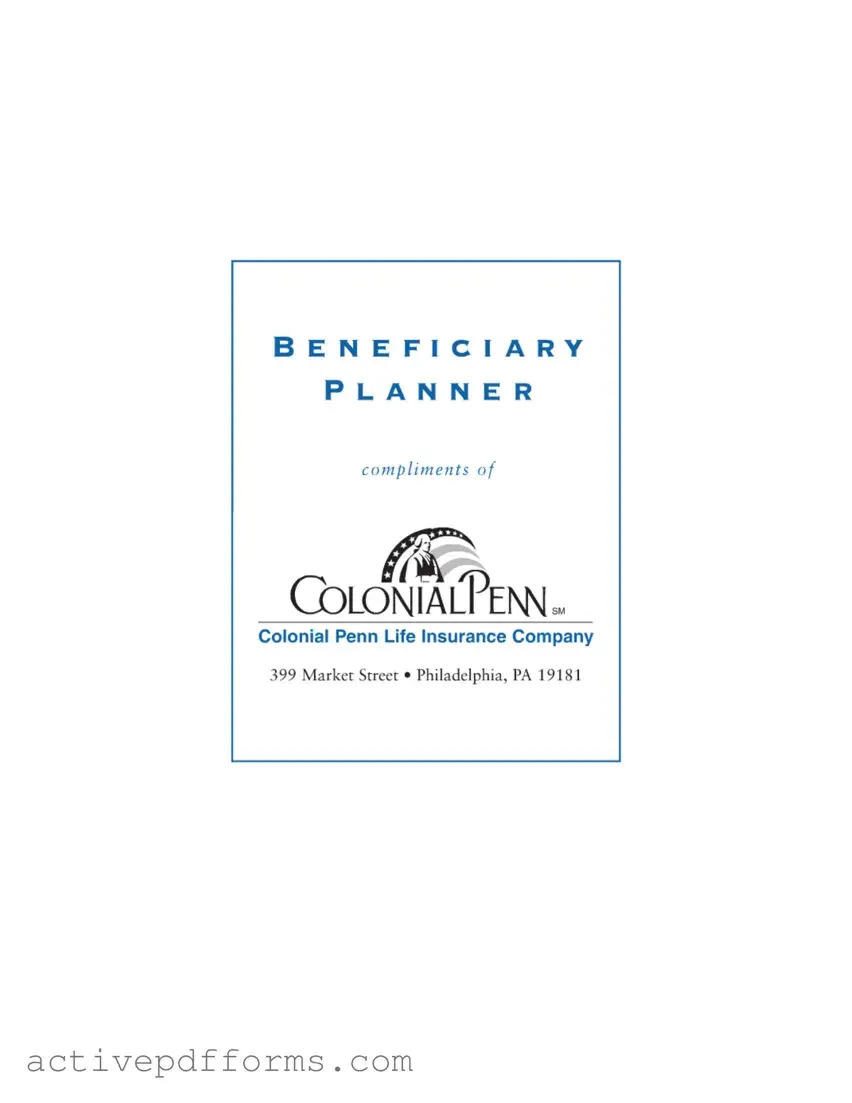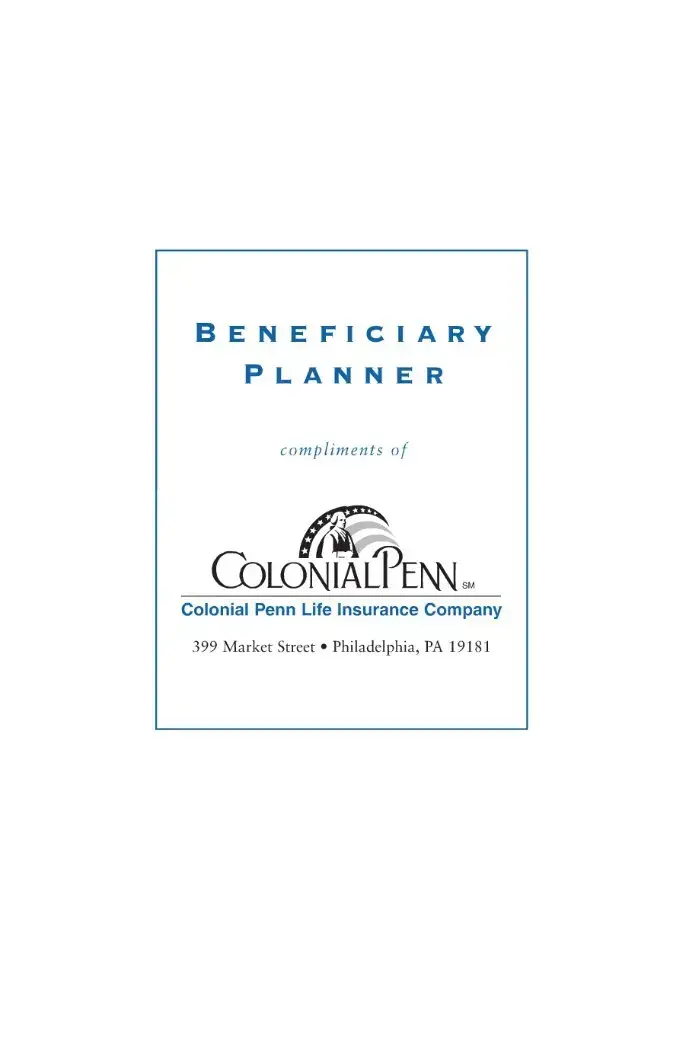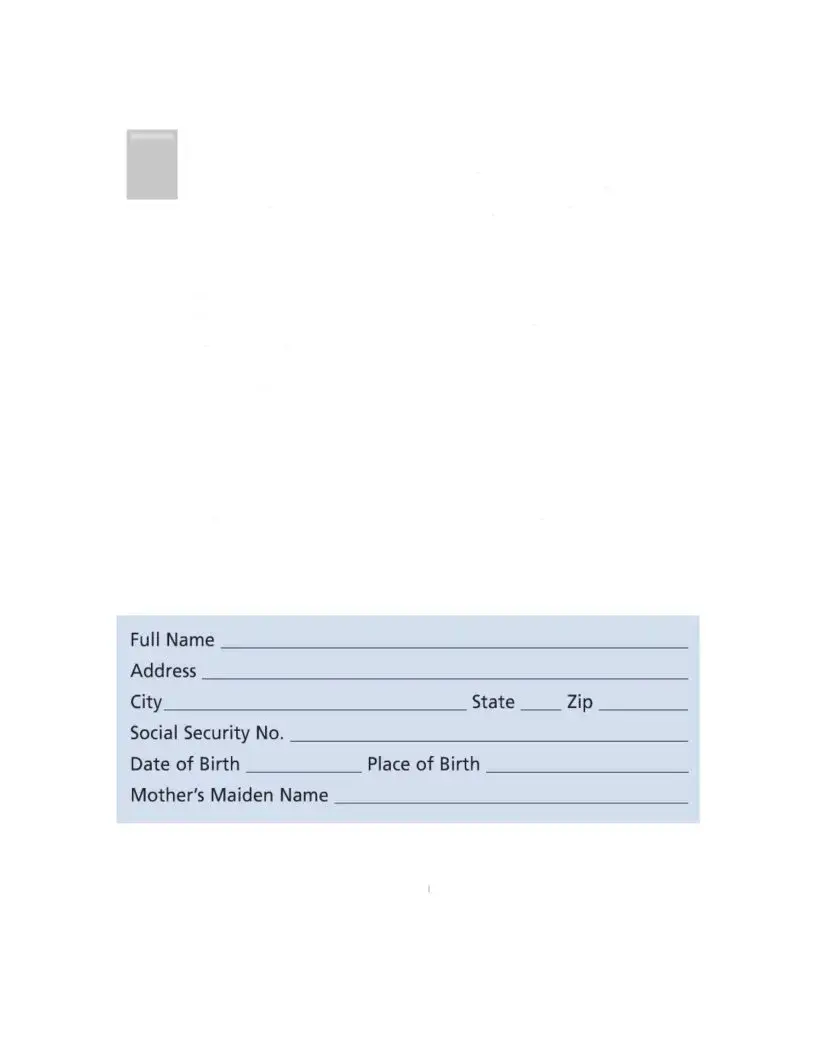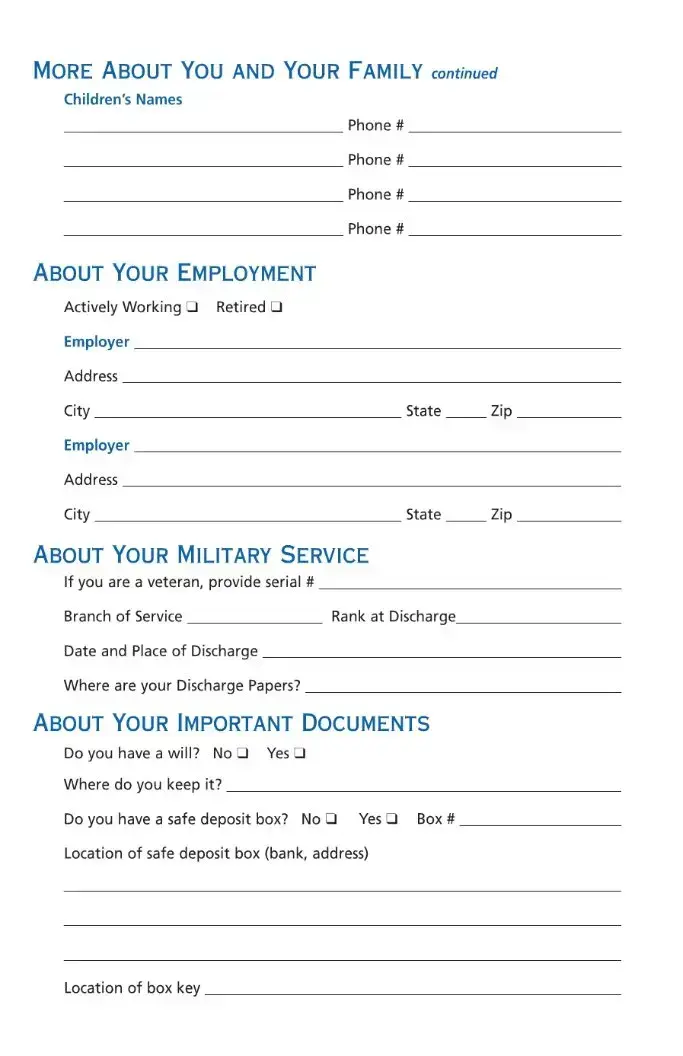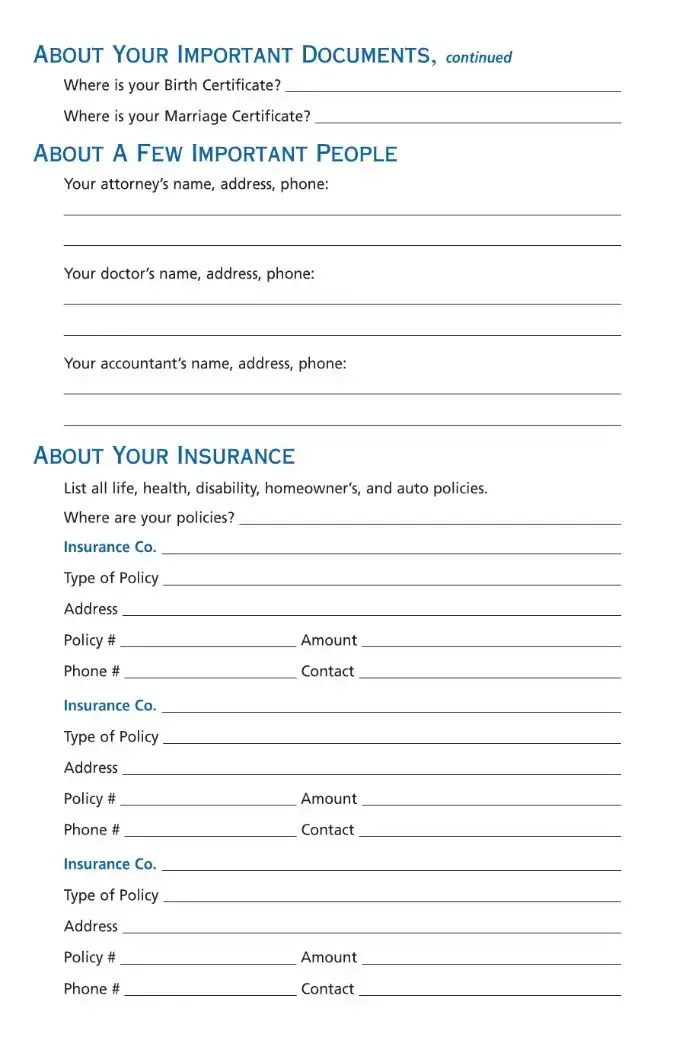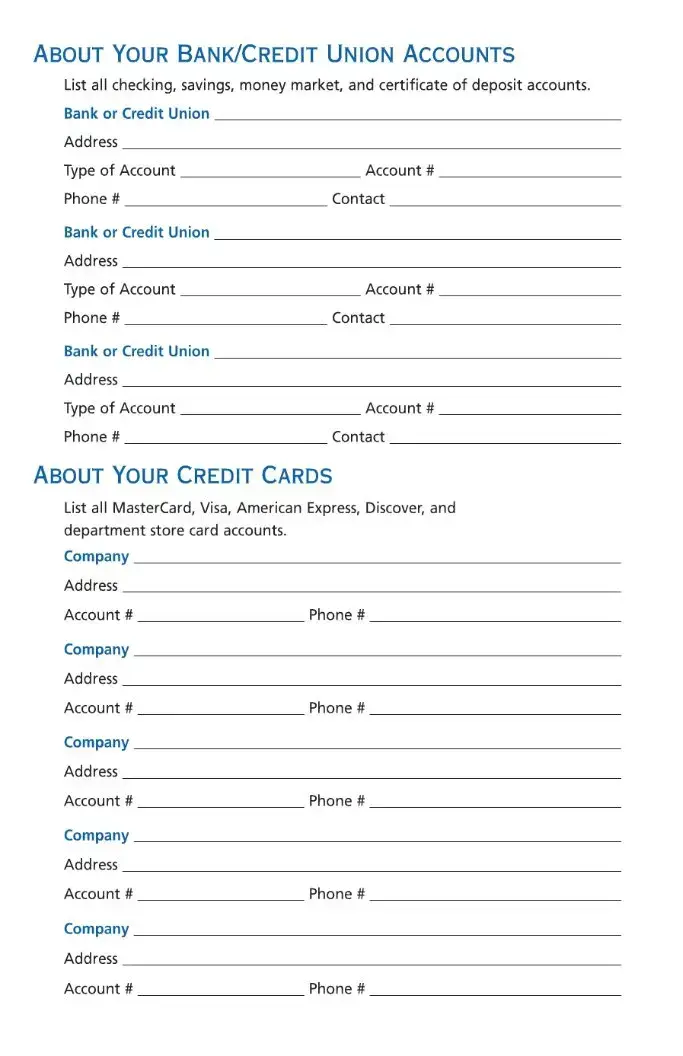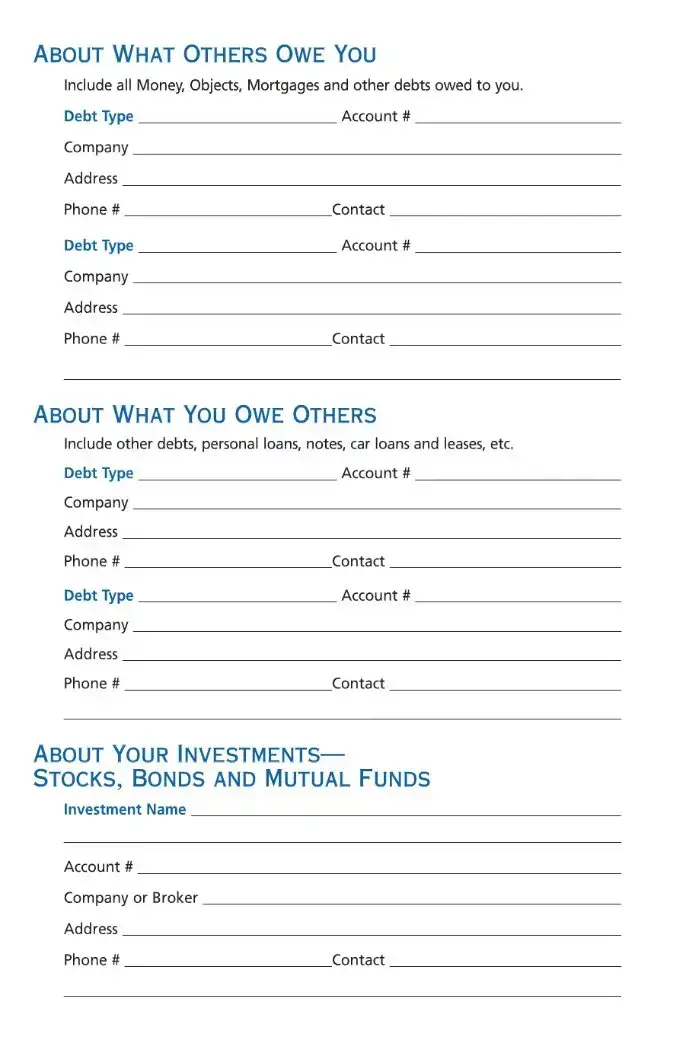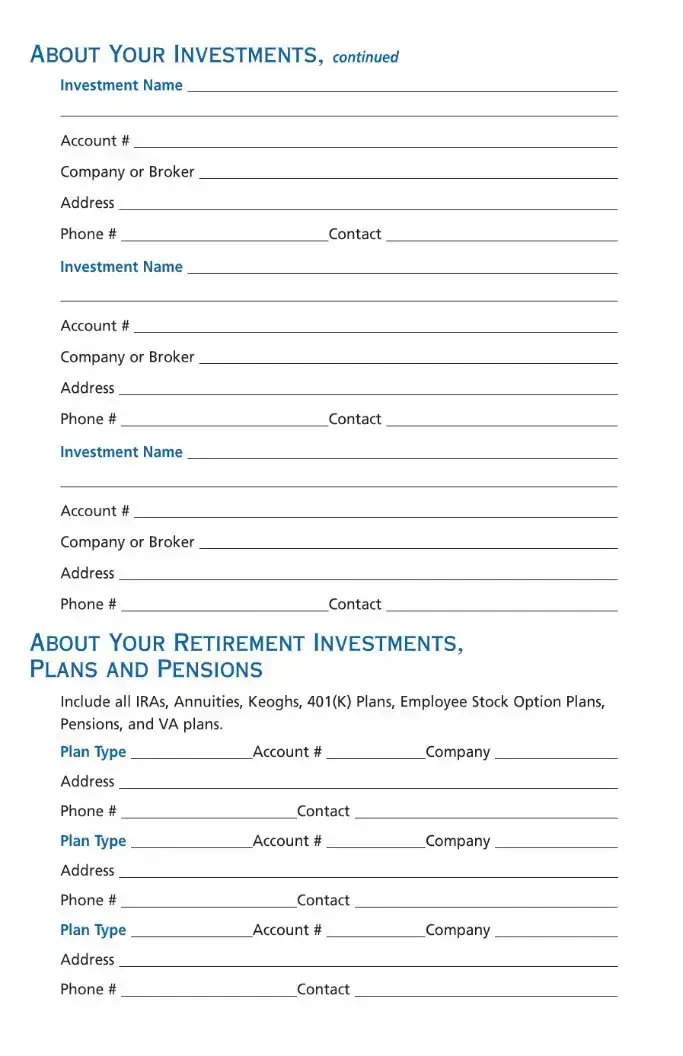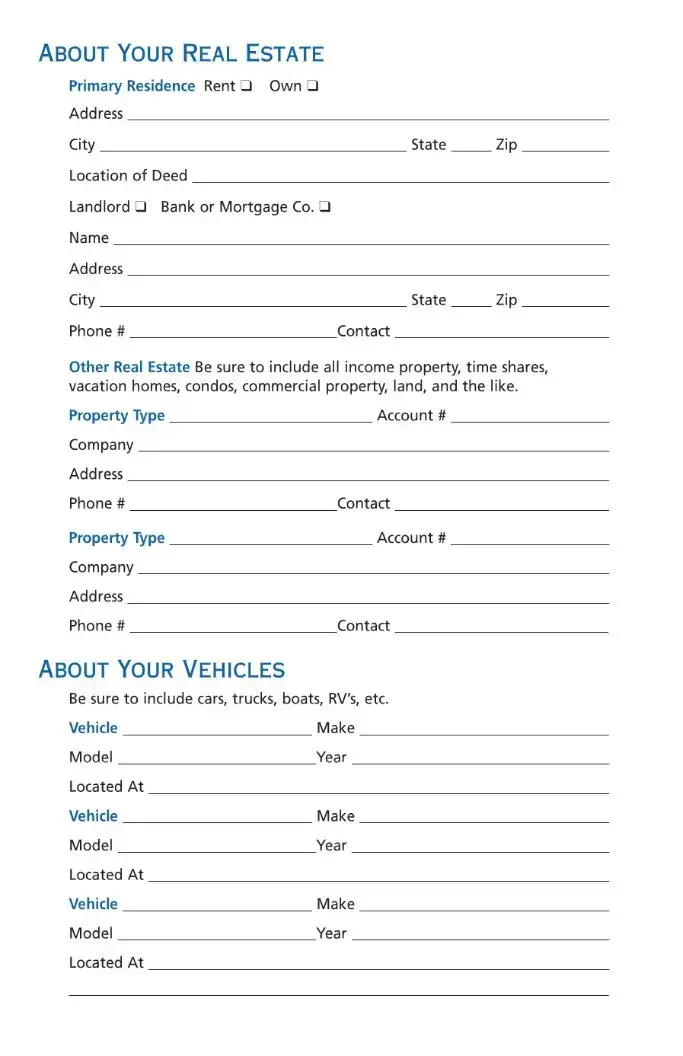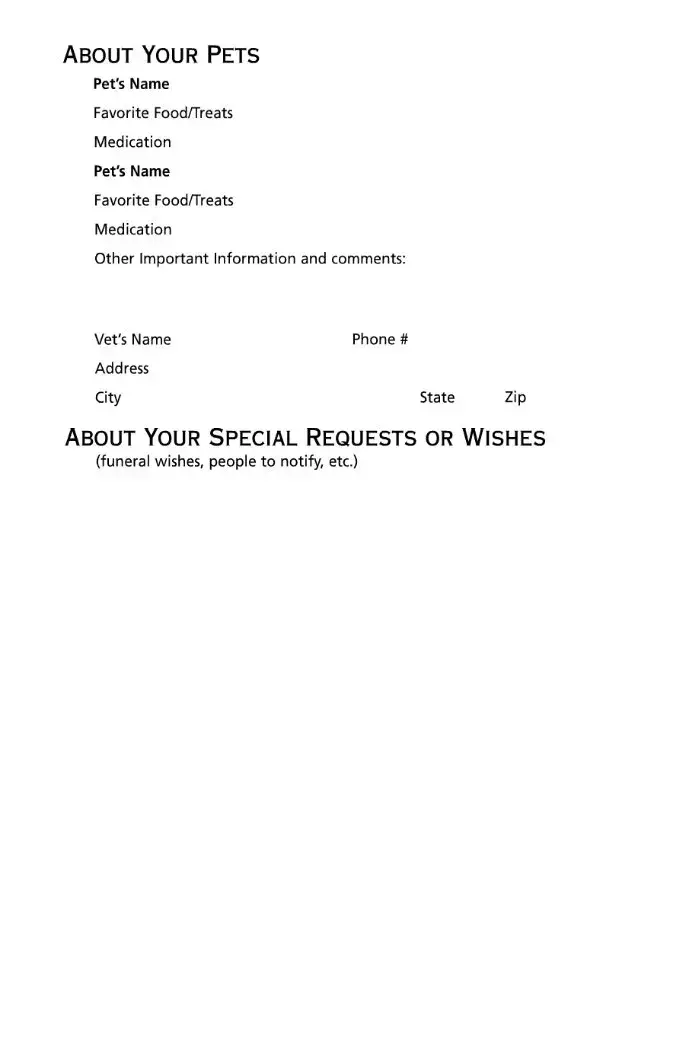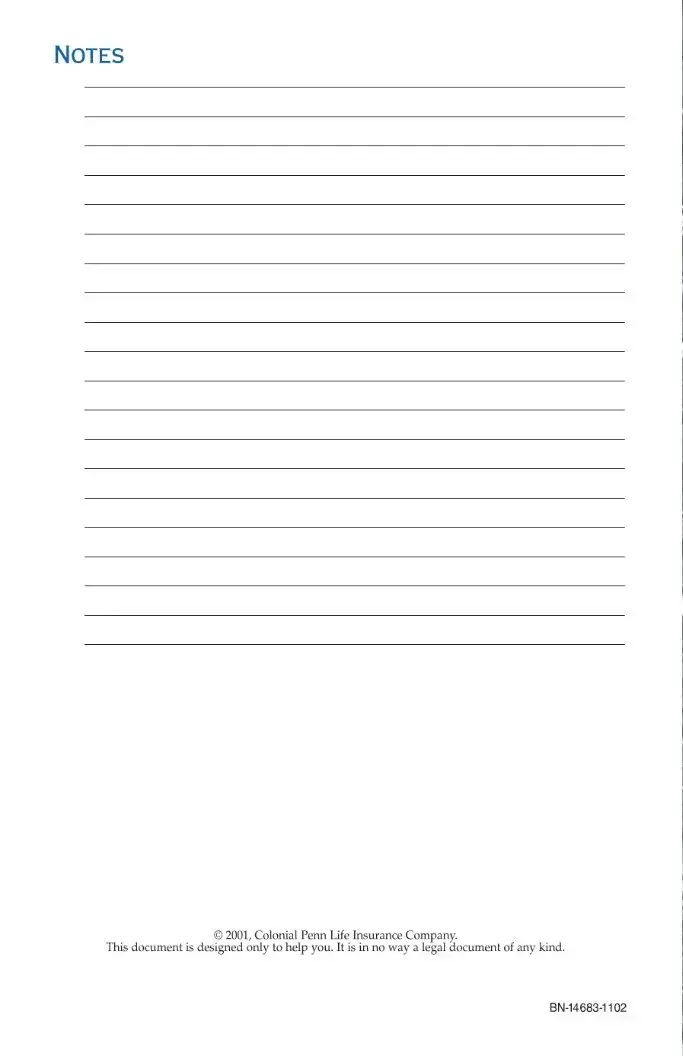Free Beneficiary Planner PDF Template
The Beneficiary Planner form, provided by Colonial Penn Life Insurance Company, serves as an essential tool for policyholders to organize and communicate their posthumous wishes and the whereabouts of important documents to a chosen family member or friend. Designed with simplicity in mind, it encourages individuals to document vital information such as the location of critical paperwork, necessary arrangements upon one's passing, bills to be settled, and accounts to be closed. This planner is an invaluable resource not only for keeping one's affairs in order but also for alleviating the burden on loved ones during a difficult time.
Edit Beneficiary Planner Now
